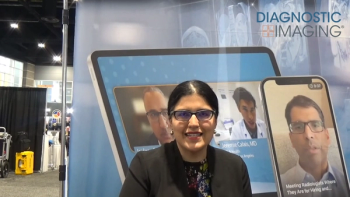
Interventional trial pits stenting against exercise
Interventional radiologists increasingly deal with patients who have peripheral arterial disease. But optimal treatment for these patients is not so clear-cut, as no studies have been definitive. That may change at the conclusion of the largest government-funded multicenter randomized clinical trial for interventional treatment of intermittent claudication.
Interventional radiologists increasingly deal with patients who have peripheral arterial disease. But optimal treatment for these patients is not so clear-cut, as no studies have been definitive. That may change at the conclusion of the largest government-funded multicenter randomized clinical trial for interventional treatment of intermittent claudication.
Problems exist regarding the diagnosis and treatment of PAD, according to Dr. Timothy Murphy, an interventional radiologist at Rhode Island Hospital and co-national principal investigator for the CLaudication: Exercise Versus Endoluminal Revascularization (CLEVER) trial.
First, data regarding the efficacy of stent placement is not definitive; second, supervised exercise therapy is not often prescribed, as it is not reimbursed by Medicare. Third, the combination of stenting and supervised exercise has not been studied, and finally, cardiac risk factors are often not aggressively treated.
Researchers at 20-plus sites intend to randomize 252 patients into four treatment groups to determine how effective stenting, drug therapy, and exercise are in various combinations.
"It's always important, when there are multiple treatments known to be effective, for patients and clinicians to have a single trial that directly compares the relative benefits of these interventions," said Dr. Alan Hirsch, trial chair and director of Abbott Northwestern Hospital Vascular Center in Minneapolis.
Enrollment, which began this year, has been slow because the patients who are randomized to a group that requires exercise need to live fairly close to the hospital in order to undergo supervised exercise three times a week.
Newsletter
Stay at the forefront of radiology with the Diagnostic Imaging newsletter, delivering the latest news, clinical insights, and imaging advancements for today’s radiologists.




























